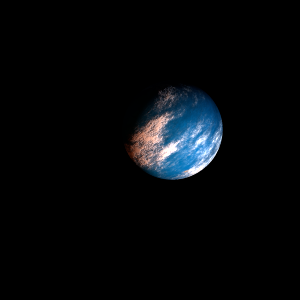|
|
Space Astro
|
Info for exoplanet "Wano-ma"
| Scientific (actual) data |
|---|
| Name | Kepler-171 d |
| Planet status | Confirmed |
| Radius | 0.169 |
| Orbital period | 39.5955 |
| Semi major axis | 0.223 |
| Discovered | 2014 |
| Updated | 2021-02-05 |
| Tconj | 2455000 |
| Impact parameter | 0.58 |
| Publication | Announced on a website |
| Detection type | Primary Transit |
| Alternate names | 2MASS J19470525+4145199 d, K00509.03, KIC 6381846 d, KOI-509 d, KOI-509.03, WISE J194705.26+414520.2 d |
| Star name | Kepler-171 |
| Right ascension | 296.77° |
| Declination | 41.76° |
| Mag j | 13.586 |
| Mag h | 13.231 |
| Mag k | 13.206 |
| Star distance | 885.43 |
| Star metallicity | -0.151 |
| Star radius | 0.84 |
| Star temperature | 5642 |
| Star alternate names | 2MASS J19470525+4145199, KIC 6381846, KOI-509, WISE J194705.26+414520.2 |
| Wikipedia article | Kepler-171 d |
Back
| |
| Fictional info (?) |
|---|
| Suggested name | Wano-ma |
| Planet type | Cold planet |
| The planet telescopically displays the complete range of phases, similar to Venus and the Moon, as it moves in its inner orbit relative to Kepler-171, which reoccurs over the so-called synodic period approximately every 87 days. |
| Atmosphere | Ethane | 63% |
| Carbon dioxide | 35% |
| Carbon monoxide | 1.6% |
| Ammonium hydrosulfide (NH4SH) | 4.6E-5% |
| Methane | 3.6E-5% |
| Atmospheric pressure | 1.3 bar |
 |
| No known satellites |
| Google search for Wano-ma |
|
Website by Joachim Michaelis
|
|
|
|